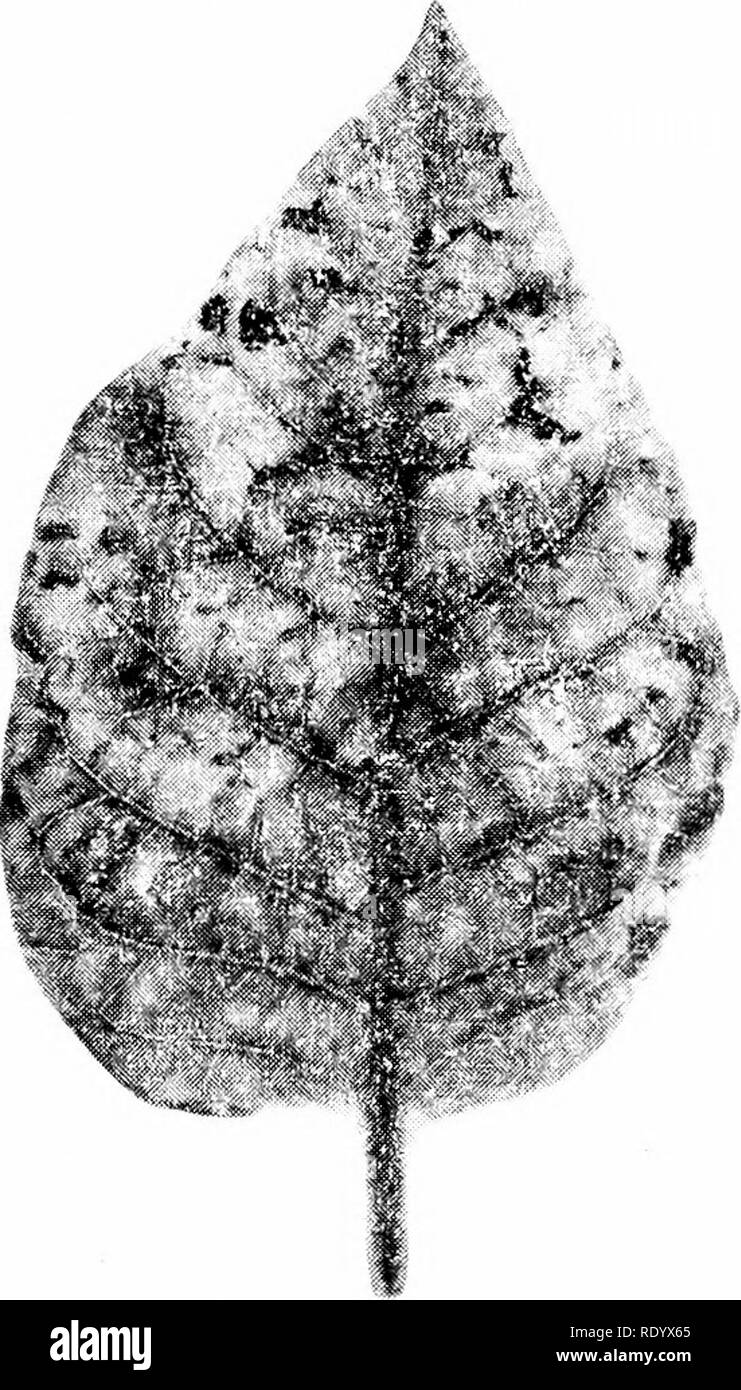. Principles of modern biology. Biology. 8 - TheCel intergradation exists between nonliving and living forms of matter. The first virus was discovered by Iwanow- ski in 1892. Iwanowski found that juice squeezed from a tobacco plant afflicted with mosaic disease (Fig. 1-3), after passing through. Fig. 1-3. A tobaco leaf infected with the mosaic virus. Note the dark diseased patches, which give the leaf a spotted (mosaic) appearance. (Courtesy of L. O. Kunkel, The Rockefeller Institute for Medical Research, New York.) an extremely fine porcelain filter, still could give rise to the disease if br

Image details
Contributor:
The Book Worm / Alamy Stock PhotoImage ID:
RDYX65File size:
7.1 MB (501.3 KB Compressed download)Releases:
Model - no | Property - noDo I need a release?Dimensions:
1194 x 2093 px | 20.2 x 35.4 cm | 8 x 14 inches | 150dpiMore information:
This image is a public domain image, which means either that copyright has expired in the image or the copyright holder has waived their copyright. Alamy charges you a fee for access to the high resolution copy of the image.
This image could have imperfections as it’s either historical or reportage.
. Principles of modern biology. Biology. 8 - TheCel intergradation exists between nonliving and living forms of matter. The first virus was discovered by Iwanow- ski in 1892. Iwanowski found that juice squeezed from a tobacco plant afflicted with mosaic disease (Fig. 1-3), after passing through. Fig. 1-3. A tobaco leaf infected with the mosaic virus. Note the dark diseased patches, which give the leaf a spotted (mosaic) appearance. (Courtesy of L. O. Kunkel, The Rockefeller Institute for Medical Research, New York.) an extremely fine porcelain filter, still could give rise to the disease if brought into con- tact with a healthy plant. This was surprising since the clear filtered juice did not contain any panicles large enough to be seen with any existing microscope. Previously in the nineteenth century, Pasteur, Koch, Reed, and others had demonstrated that many dis- eases in plants and animals are caused by microscopic parasites—such as bacteria and protozoans—which invade the tissues of other plants or animals. But in the present century it soon became apparent that other diseases must involve infective bodies much smaller and simpler than any known micro- organism. Now, in fact, a fairly large number of virus diseases are recognized. These in- clude smallpox, infantile paralysis, influenza, the common cold, and measles, for man; swine influenza, hog cholera, and bovine hoof and mouth disease for other animals; and the bacteriophages (Fig. 1-4) and mosaic infections of plants. One unique feature of the viruses is the extreme smallness of the individual particles, each of which can be identified as being a complete virus unit. If one takes a fluid con- taining bacteria and forces this fluid through a porcelain filter (ultrafilter), the filtrate obtained is found to be sterile, that is, en- tirely free of bacteria. Apparently the pores of such a filter are so small that they prevent the bacteria from passing through. If, how- ever, one ultrafilters a fluid contai